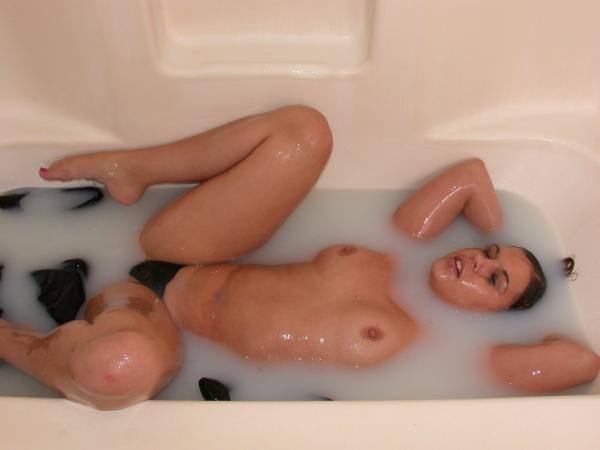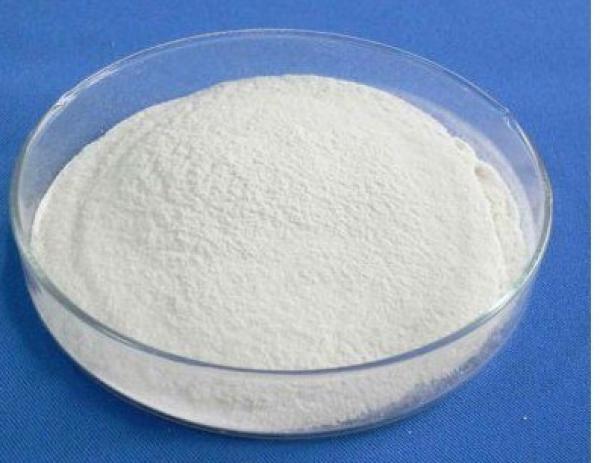Methylcellulose
Affectionately known to some as "methy, " methyl-cellulose is a commercial thickener. It is created from the cellulose found naturally in vegetables[1]. This safe, virtually-odorless, tasteless white powder, even when mixed in small amounts, will efficiently thicken a large volume of water. Used as a base, it is a very cost-effective way to make a large amount of clear gel. It stays thick when heated, and will store for long periods of time without any preservative.
Cleanup
Plain water is all that is needed to completely rinse away methyl-cellulose. Due to its thick nature, though, the rinse time may be long. It is even easy to rinse from hair, as exemplified by the fact that most shampoos are actually created with a base thickened with a methyl-cellulose-type substance.
Preparation
Any consistency of slime can be made by varying the water-to-methyl-cellulose ratio. It can be made very thin (akin to silky water), medium (like sex lube), or even as thick as mayonnaise. At the extreme, it can even be made solid. Very few other substances allow the versatility of methyl-cellulose.
This white, powdery substance actually dissolves better in cold water than warm water. However, adding it directly to cold water can cause it to dissolve almost instantly, resulting in slimy clumps that contain dry powder. This can be avoided by stirring or mixing vigorously while gradually shaking the powder into the water.
Alternatively, using hot water will prevent the clumping and promote even disbursement of the powder grains into the water. As the water cools, the grains will will begin to actually dissolve and thicken the water. It is important to shake or mix the solution very frequently as it dissolves, or else you will end up with a thick layer of solid slime on the bottom of the container, with pain water on top. Shaking it will not mix it back up.
If you end up with a layer of solid slime, or with clumps, they can be dissolved with a hand mixer, resulting in perfectly-smooth slime.
To get a syrupy texture, mix about 5% methyl-cellulose to 95% water. This equates to about a heaping teaspoon in a cup of water, or 2 pounds of it in a normal-sized bathtub. Different grades of methyl-cellulose, and other factors, may affect its efficiency at thickening, as well as how quickly it finishes thickening. It is easy to dilute if it's too thick, and also easy to add extra powder to a mixture that is too thin: The initial thickness of the existing slime helps to keep the additional powder suspended while it absorbs water, so you won't need to heat it or mix it as virously.
This white, powdery substance actually dissolves better in cold water than warm water. However, adding it directly to cold water can cause it to dissolve almost instantly, resulting in slimy clumps that contain dry powder. This can be avoided by stirring or mixing vigorously while gradually shaking the powder into the water.
Alternatively, using hot water will prevent the clumping and promote even disbursement of the powder grains into the water. As the water cools, the grains will will begin to actually dissolve and thicken the water. It is important to shake or mix the solution very frequently as it dissolves, or else you will end up with a thick layer of solid slime on the bottom of the container, with pain water on top. Shaking it will not mix it back up.
If you end up with a layer of solid slime, or with clumps, they can be dissolved with a hand mixer, resulting in perfectly-smooth slime.
To get a syrupy texture, mix about 5% methyl-cellulose to 95% water. This equates to about a heaping teaspoon in a cup of water, or 2 pounds of it in a normal-sized bathtub. Different grades of methyl-cellulose, and other factors, may affect its efficiency at thickening, as well as how quickly it finishes thickening. It is easy to dilute if it's too thick, and also easy to add extra powder to a mixture that is too thin: The initial thickness of the existing slime helps to keep the additional powder suspended while it absorbs water, so you won't need to heat it or mix it as virously.
Safety
Methyl-cellulose can be purchased in food-grade or non-food-grade qualities. However, even the non-food-grade versions which have not been prepared in a sterile environment are safe for external use. Non-food grade versions are typically made in labs which also produce other chemicals which are not safe to ingest. Cross contamination is possible so non-food grade methyl-cellulose should only be used externally. It is safe for use as a sexual lubricant, as most lube is actually made from methyl-cellulose or a similar substance. It is safe for use with condoms, and will not irritate mucus membranes or genitals. Methyl-cellulose is not toxic when ingested however it should not be ingested in large amounts. The body is unable to break it down so it will act as a laxative and can cause abdominal cramping.
Because methyl-cellulose comes in a fine powder form, it is easily dispersed into the air, especially if the container has been shaken before being opened. Because it thickens water so efficiently, it is advisable to avoid breathing it in. Though it's non-toxic, coating your lungs with this gel is not a good idea.
Because methyl-cellulose comes in a fine powder form, it is easily dispersed into the air, especially if the container has been shaken before being opened. Because it thickens water so efficiently, it is advisable to avoid breathing it in. Though it's non-toxic, coating your lungs with this gel is not a good idea.
Uses
Due to its being relatively cheap and neutral, methyl-cellulose is an ideal substance to make large volumes of slime. A few cups of it is all that is needed thicken a bathtub or baby pool full of water.
It can also be used to bulk up the volume of other messy substances: Mixing in some cake mix, shaving cream, pudding, or almost any other messy substance, will increase the volume more cheaply than using more of the messy substance itself.
It can also be used to bulk up the volume of other messy substances: Mixing in some cake mix, shaving cream, pudding, or almost any other messy substance, will increase the volume more cheaply than using more of the messy substance itself.
Where to Buy
Methyl-cellulose is contained in many products, often adorned with few other ingredients. Laxatives such as Citrucel are based on methylellulose[2], but obtaining enough for a wamming session would be ridiculously expensive.
You can get pre-coloured Methyl-cellulose from MessySupplies.com
Another place to buy in bulk https://amzn.to/33B2Gf4
You can get pre-coloured Methyl-cellulose from MessySupplies.com
Another place to buy in bulk https://amzn.to/33B2Gf4
References
add section
Design & Code ©1998-2025 Loverbuns, LLC Content ©messyProfessor18 U.S.C. 2257 Record-Keeping Requirements Compliance Statement
Epoch Billing Support Log In


 Love you, too
Love you, too


